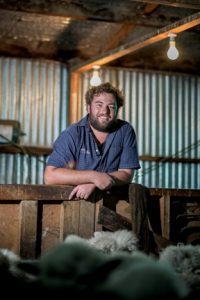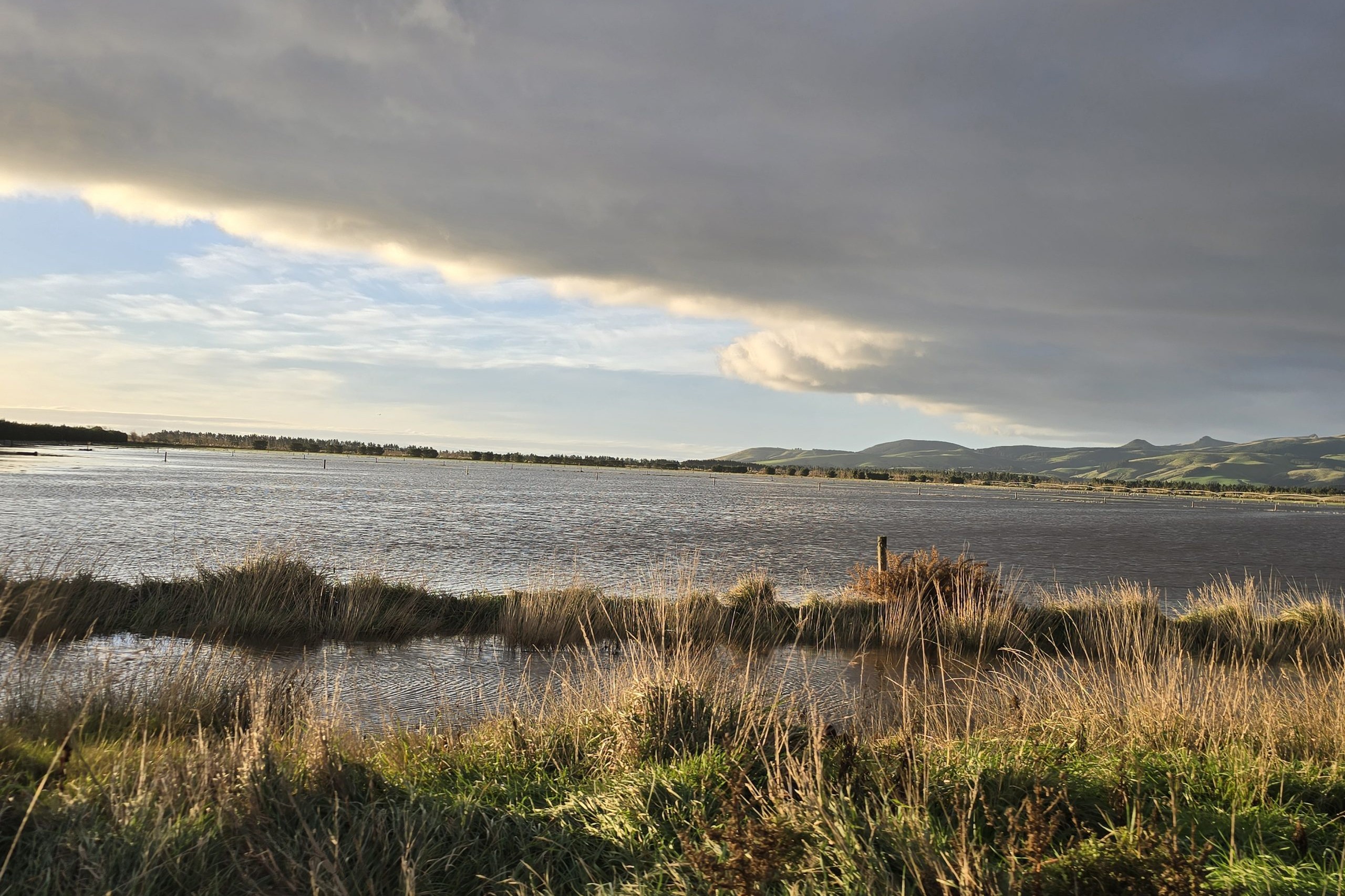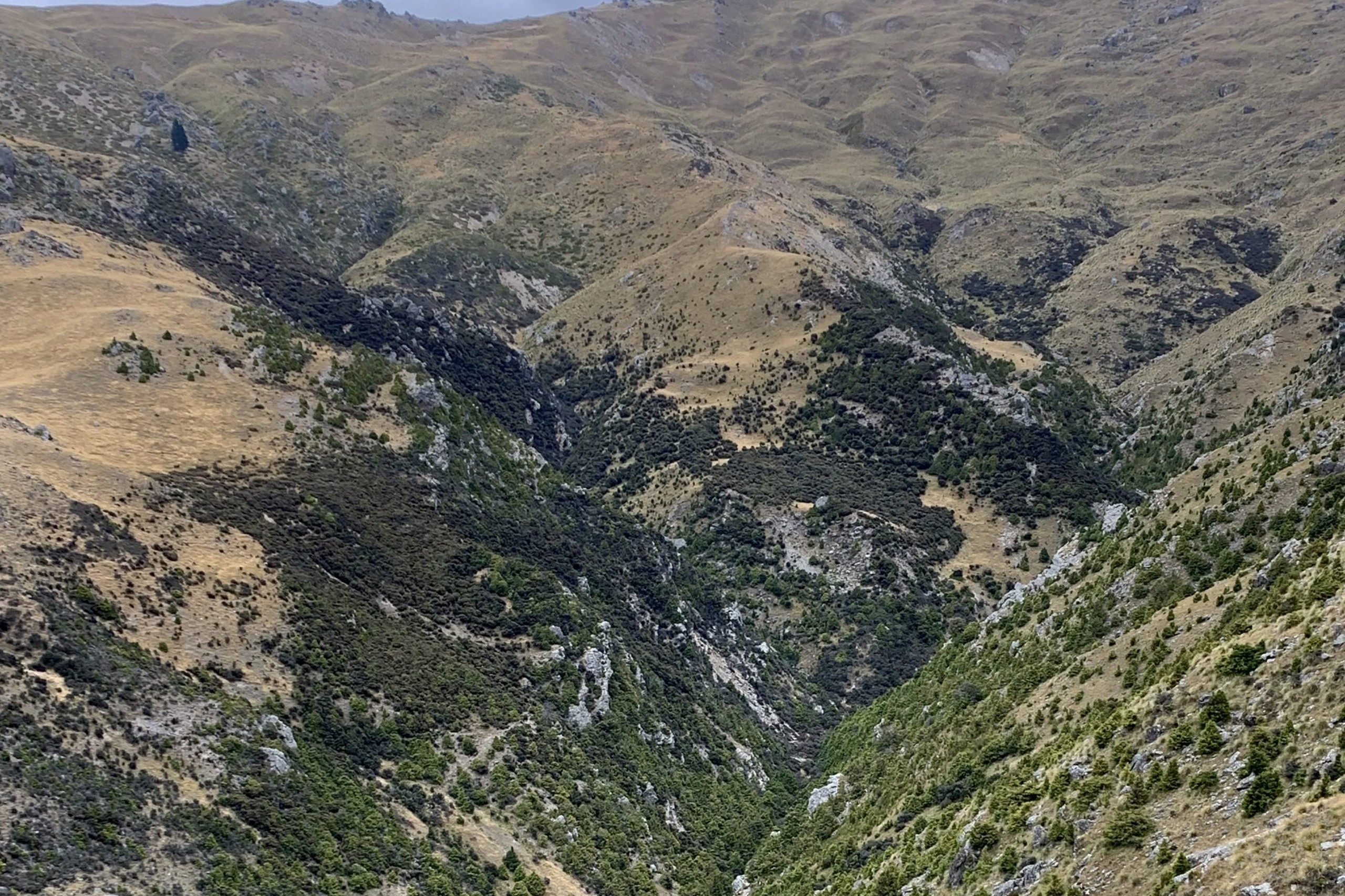A young couple found themselves unexpectedly taking over the family farm. Russell Priest reports. Photos: Brad Hanson.
Faced with the death of both his parents in close succession John Small had little time to reflect before taking over the farming business.
John was brought up on the farm which his parents had farmed for 30 years. He spent two years working full time with his father Ross before he died last year. His mother Sandra died in 2015. It’s barely enough time to learn many of the more-detailed farm management practices, but time will fix that. At 24 John has plenty of that on his side. Also in his favour is the good state the farm was left in by his parents for which he and wife Leah are grateful for.
Infrastructure forms a large component of a farm’s capital expenditure.
From the well-constructed and maintained fences, yards and farm buildings to the degree of subdivision, provision of water and quality of the pastures, John and Leah have a sound foundation on which to build their business.
‘Spreading the lambing dates reduces the storm risk and also makes it easier to build up feed covers for lambing.’
Leah, 23, who hails from dairy-farming stock, works three days a week in nearby Dannevirke as a property management consultant with a real estate firm. She spends much of her spare time helping John on the farm for which he is very grateful.

The Smalls’ Wai-totara, is a 600-hectare (550ha effective) sheep and beef farm, 35km south east of Dannevirke in southern Hawke’s Bay. Most of the farm is rolling-to-medium hill country (450ha) with 50ha of flats and 100ha of steep hills rising from 250m to 730m. An occasional fall of snow is experienced particularly on the higher peaks.
The Weber area is renowned for its strong west-to-north west winds. Sometimes venturing to the highest point on the farm is too dangerous due to the likelihood of being blown over. The wind is great for getting wool dry but tough on soil moisture levels.
The predominantly clay soils receive an average annual rainfall of 1350mm which is normally evenly distributed although the farm can often experience dry summers.
Crossbreeding pays off
Wai-totara has been farmed as a traditional sheep and cattle breeding and finishing business but there are a couple of curve balls involved – Red Devon cattle and Texel sheep.
Ross introduced the moderate framed, early maturing and placid cattle to his predominantly Simmental herd eight years ago to improve ease of calving, docility and fertility. John has continued with his father’s policy of top-crossing the cows with Red Devon bulls so now there are a number of purebred females in the herd.
Eighty cows with varying percentages of Red Devon blood, up to a quarter of which are R3 in-calf heifers, are farmed. Being an easy-care breed means John can run the mixed-aged (MA) cows on the highest and most exposed country during calving without supervision. It also allows him to avoid lambing ewes at this altitude where lambs can readily die of hypothermia. The R3 heifers are calved on the easier country among ewes and lambs.
The breed met all of John’s father’s expectations having delivered close to 100% calving last year (one dry cow out of 80) although John concedes the bull is normally out for 70 days.
“This makes it easier to achieve a higher in-calf rate than with a more restricted mating period.”
Bulls are out from December 1 to February 15 and while 15-month heifers are not mated John is intending to introduce this practice in the next two years.
Yard weaning of calves has been practised in recent years. Calves are fed on hay for five days giving them the opportunity to interact with humans while also being exposed to an electric fence as John extends the yard area into an adjacent paddock. This provides them with a useful learning experience for when they are break-fed on rape from mid-June to early September before being spread among the ewes and lambs. R2 steers and surplus R2 females are sold in the yards before the second winter.
MA cows not only perform the role of pasture groomers over the spring/summer period but also clean up any roughage during the winter that has developed.
Spreading the lambing risk
In spite of running a highly productive Romney flock based on Jason Le Grove’s Motu-nui bloodlines, John chooses to also run a small Romney Texel flock and a B-Romney flock. Both groups are early mated allowing him to benefit from early season lamb premiums and take some pressure off feed demand at a critical time.
A total of 2420 ewes go to the ram – B-flock ewes (500) and Texel Romney ewes (220) go to Texel and Poll Dorset rams respectively on March 15 for three cycles.

John says the Texel influences leaves them with excellent early growth and high-yielding carcases for which we get a significant premium.
Mating of A-flock ewes (1700) to Romney rams begins on April 1 for 2½ cycles. The overall lambing percentage is 150.
“I try to have the ewes on a rising plane of nutrition before the rams go out and for a cycle during mating if I can,” John said.
Three separate rotations of at least two weeks duration involving the Texel and B-flock ewes, the A-flock ewes and the replacement ewe hoggets operate during the winter. The latter are shorn in August then set-stocked on saved pasture in a sheltered bush paddock before doing it hard on some of the higher country during lambing.
Lambing of the B-flock and Texel ewes takes place on the easier-contoured lower country and the A-flock ewes at a higher altitude.
“Spreading the lambing dates reduces the storm risk and also makes it easier to build up feed covers for lambing.”
The first draft of the B-flock and Texel lambs occurs late October/early November before weaning. About 100 lambs killed before Christmas averaged about 35kg liveweight, yielded about 55% and fetched an average of $130/lamb.
“Texel cross ewes may not be as fecund as the Romneys but they produce some amazing lambs.”
Those killed in the autumn average about 44kg with even some of the Romneys yielding up to 55%.
Two thirds of the male lambs and those ewe lambs not required as replacements are finished with the rest being sold as stores. Replacement ewe hoggets number about 700.
In selecting his Romney sires John concentrates on structural features relating to their mobility and their ability to feed as well as their breeding values for number of lambs born and early-to-eight months growth since this is the period when he finishes most of his lambs. Despite the state of the crossbred wool market he still likes to see a sound fleece.
The 50ha of flats complement the hill country. While the latter generates the store stock the former is farmed more intensively to finish lambs, winter weaners and make hay.
Ten hectares of sprayed pasture is direct-drilled in early November with Greenland rape and used to finish lambs over the summer before being shut up, with the regrowth used (supplemented with hay) to winter weaners for three months in late winter/early spring.
Italian ryegrass sown in spring follows the winter rape then the paddock is returned to permanent pasture. John is keen to substitute the Italian ryegrass with a mix of red and white clover which he would replace after two or three years.
Building a dog team
John boarded at Napier Boys High School before heading across the ranges in 2012 to Otiwhiti Station near Hunterville to become a cadet for a year at the Otiwhiti Land Based Training school (Country-Wide, March 2018). After graduating he spent a further year as a junior shepherd on the station before getting a job at nearby Ferndale Station. He spent two years there before returning home after his mother died to support his father who was suffering from ill-health.
John has fond memories of Otiwhiti, citing the complete change in environment including interacting and working closely with eight other cadets, one of whom was a female, the extensive nature of the farming operation, the use of horses and learning the art of dog training.
He says Otiwhiti operated a different style of farming to what he was used to and riding a horse was a new experience.
“I took an eye pup along with me to the school and was taught how to train it and I also developed an understanding of what dogs are capable doing on the farm.”
Halfway through the year John bought a huntaway so that when the course was finished he had a dog team which made getting a job more easily.




